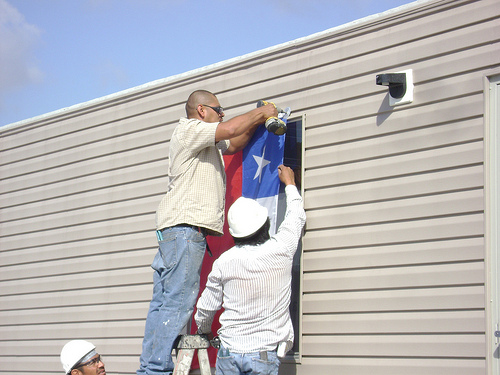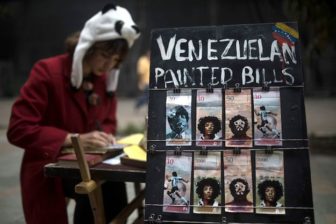The 8.8-magnitude earthquake and ensuing tsunami that hit Chile on February 27, 2010, left local micro-enterprises in a dire situation. In the southern coast, where the effects were most severe, entire fishing villages and towns were wiped out. Small entrepreneurs saw their businesses literally crumble to the ground.
In the most affected areas, 98 percent of businesses are micro-enterprises. Mostly owned by self-employed businesspeople, micro-enterprises are one of the cornerstones of the Chilean economy, providing the largest portion of jobs in the country. On average, the monthly household income for those that rely on micro-businesses ranges from $580 to $780. So, for them and the Chilean economy, one of the first steps was to rebuild their workplaces and re-establish not just their lives but also their supply chains.
The Chilean government estimated the reconstruction cost at $30 billion, or 18 percent of national GDP. Fortunately the government had revenues to cope with a disaster of this magnitude. Yet, for many micro-entrepreneurs—local producers and artisans—the earthquake meant the end of their livelihoods and the beginning of hardships that continue today.
This required a new kind of reconstruction and income recovery effort. For NESsT, an international nonprofit organization supporting the development of social enterprises1 in emerging markets, one of the first steps was to help re-establish the backbone of the economy. Launched just days after the earthquake, the Levantando Chile Fund was set-up to help recover and then grow the income streams of local entrepreneurs.
Two local social enterprises collaborate in this effort: Relmu Witral in Tirua, a rural seaside town, and Trabajo para un Hermano in the battered city of Concepción. The immediate task was to devise a plan on how to get local producers and artisans back on their feet.
Relmu Witral (or Rainbow Loom as translated from the Mapuche language) is an association of 150 indigenous women that produces hand-woven textiles using traditional Mapuche techniques. Besides making a fair wage, their jobs also help to promote Mapuche culture. But the earthquake and tsunami completely paralyzed Relmu Witral’s production and sales. Their shop was devastated along with precious woven products, stocks, records, equipment, and most tools.
For Relmu Witral, rebuilding meant physical repair, psychological support and business development. First, the store, production workshop and storefront sign were repaired, allowing production and sales to resume. The immediate result: a doubling in the number of customers and a resumption of sales and income. At their request, the women also received emotional support from psychologists to help them deal with the fears, loss and stress of the more than 300 aftershocks. This support allowed the weavers to refocus their energies and to resume their weaving. It also strengthened the group and created a new sense of camaraderie and trust that helped lead to the emergence of new potential leaders within the organization.
On the enterprise development side, Relmu Witral—with NESsT support—evaluated its current business strategy to improve its cost structure and develop revised financial projections. To open up distribution channels, new contacts were made with fair trade stores.
This came along with an updated marketing plan that seeks to boost sales by targeting new clients at national and international product fairs and shows. The plan also set in motion development of a new website to reach a wider audience.
This new model of comprehensive post-catastrophe business redevelopment “helped us get back on our feet,” says Angélica Pérez Pirquimán, President of Relmu Witral.
A similar story, with equally positive results, was also unfolding in Chile’s second-largest city and the area most affected by the earthquake.
Trabajo para un Hermano—an organization that provides training and support for 50 artisans and runs a fair trade store called Manos del Bio Bio (Hands of the Bio Bio)—saw its fortunes turn in a matter of minutes. About 30 percent of the artisan-owned production workshops suffered medium to severe damage and many lost the tools essential for handcraft production. Destruction at the store meant the loss of already-finished products and a lack of any income sources to finance raw material purchases. The NESsT answer: a $500 grant to each artisan for repair of workshops and for the acquisition of new equipment. This allowed everybody to get back to work and to begin the slow, painful process of moving on with their lives. Three months after the earthquake, sales had doubled.
In both cases the model was simple but innovative. First, strong organizational capacity—including local presence—is critical to respond quickly to an emerging situation. Second, long-term relationships must be established with organizations supporting local producers and artisans in the affected areas. Third, areas of technical support and investment must be defined in partnership with local organizations and producers. Fourth, methodologies and approaches must be flexible and adapted to fit the needs of a particular situation and the local beneficiaries.
Tents and immediate relief aid are critical for the short-term well-being of a community after a natural tragedy. But the true foundations for rebuilding come with supporting local producers that have been temporarily shut out of the market—and need to find a way back in.
Footnote:
1. This article defines a social enterprise as a nonprofit business that seeks to sustainably resolve a social challenge.






